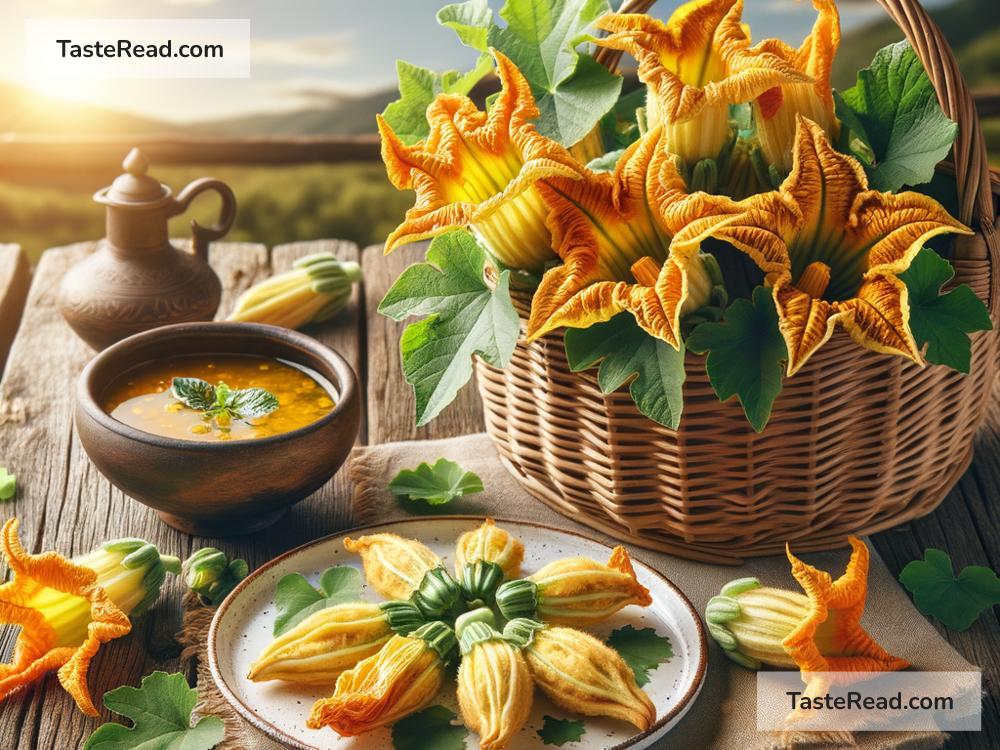How Pumpkin Flowers Became a Delicacy
Pumpkins are a favorite vegetable for many people around the world. When we think about pumpkins, most of us imagine thick orange fruits used for soups, pies, or even decorations during Halloween. However, did you know that the flowers of the pumpkin plant are also treasured as a delicious food? Pumpkin flowers have become a delicacy in many cultures, and their journey to becoming a prized ingredient is fascinating. Let’s take a closer look at how pumpkin flowers became a staple in kitchens around the globe.
What Are Pumpkin Flowers?
Pumpkin flowers are the bright yellow or orange blossoms that grow on the pumpkin plant before the fruit fully develops. Both male and female flowers grow on the plant. Male flowers usually grow first, and they are responsible for carrying pollen. Female flowers appear slightly later and eventually develop into pumpkins if pollinated.
Male pumpkin flowers are often harvested for cooking because they don’t produce fruit. By picking these male blossoms, farmers can prevent waste while allowing the female flowers to grow pumpkins. This practical use of pumpkin flowers is one reason why they became popular in cooking.
A Tradition Rooted in Farms and Gardens
Pumpkin plants have been cultivated for thousands of years, starting in Central America and spreading worldwide. Native communities in Mexico and Central America historically used every part of the pumpkin plant, including its flowers, for food. Nothing went to waste. Women in these communities often harvested the delicate blooms and created simple yet flavorful dishes for their families.
Early farmers discovered that the pumpkin flowers were not only edible, but also tasty, with a mild, slightly sweet flavor. These flowers were often stuffed, fried, or added to soups and stews. The tradition of cooking pumpkin flowers grew and spread, passing from generation to generation.
Why Are Pumpkin Flowers Special?
There are many reasons why pumpkin flowers stand out as an ingredient. Firstly, they are incredibly nutritious. Pumpkin flowers are rich in vitamins like A and C, as well as important minerals such as calcium and iron. They are also low in calories, making them healthy for everyone.
Secondly, pumpkin flowers have a unique texture and flavor. They are tender, with a subtle sweetness that adds depth to a variety of dishes. Their vibrant color also makes meals look beautiful and appetizing.
Finally, pumpkin flowers are versatile. Because of their delicate structure, they can be stuffed with ingredients like cheese or spices, lightly battered and fried, or chopped into salads, soups, and stir-fries. This versatility allows chefs and home cooks to experiment and create exciting recipes.
How Did Pumpkin Flowers Gain Global Recognition?
As pumpkins spread from the Americas to Europe, Asia, and Africa, people in different countries began experimenting with the flowers as well. Over time, pumpkin flowers became a part of traditional cuisines around the world.
In Italy, pumpkin flowers—called fiori di zucca—are often stuffed with ricotta cheese and herbs, then fried or baked for a delicious appetizer. In India, pumpkin flowers are dipped in chickpea flour batter and deep-fried to create crispy fritters. In countries like Thailand and Vietnam, pumpkin flowers are added to stir-fried dishes or soups for a delicate touch of flavor. Meanwhile, in Mexico, pumpkin flowers, known as flores de calabaza, are commonly used in quesadillas or soups, showcasing their deep roots in the region’s culinary heritage.
In recent years, pumpkin flowers have also found their way into high-end restaurants, where chefs use them to add elegance and color to dishes. As more people look for sustainable and plant-based options, these flowers have become a symbol of eating responsibly, reducing food waste, and appreciating seasonal ingredients.
Cooking Pumpkin Flowers at Home
While pumpkin flowers are considered a delicacy in many restaurants, they are surprisingly easy to cook at home. If you have access to fresh pumpkin flowers from a garden or market, you can try creating your own tasty dishes.
- Stuffed Pumpkin Flowers: Fill the blossoms with cheese, garlic, or herbs, then bake them or fry them for a classic dish.
- Flower Fritters: Dip the blooms into a light batter made of flour and water, then fry them until crispy.
- Soup or Stir-Fry: Chop the flowers and add them to your favorite soup or stir-fry recipe for a flavorful twist.
Before cooking pumpkin flowers, make sure to carefully wash them and remove any insects or dirt. Gently remove the inner parts (like the pollen-filled stamen) if you prefer a smoother texture.
A Seasonal Treat Worth Celebrating
Pumpkin flowers are a wonderful example of turning something simple and seasonal into a delicacy. They remind us to appreciate the beauty and flavor of nature’s gifts. By embracing pumpkin flowers as food, cultures around the world have created dishes that are not only delicious but also sustainable and creative.
Whether fried, stuffed, or added to a stew, pumpkin flowers are proof that even the simplest ingredients can become something extraordinary. So, next time you see pumpkin plants in the garden, look closely at their flowers—you might be surprised by how much they have to offer!


